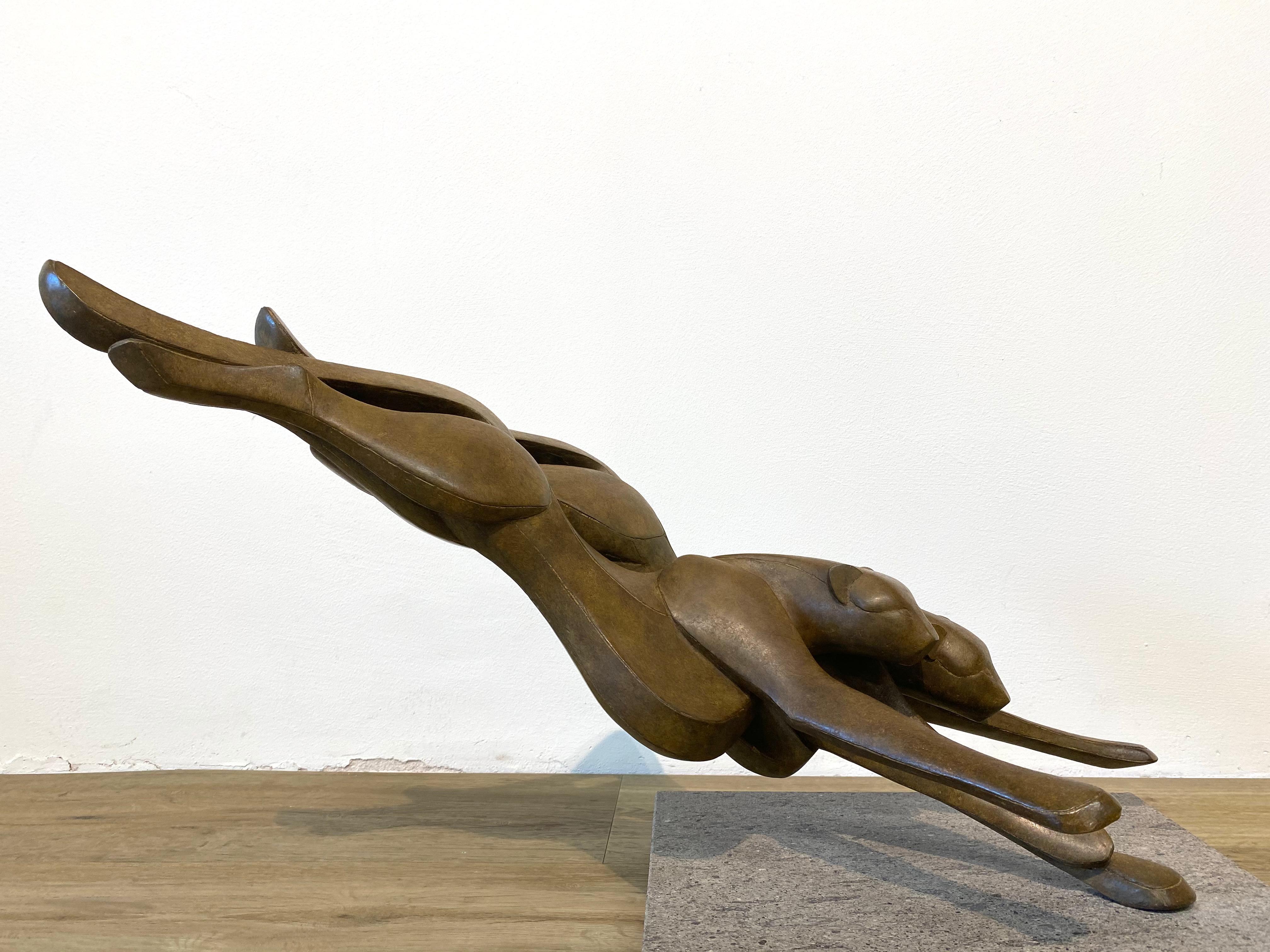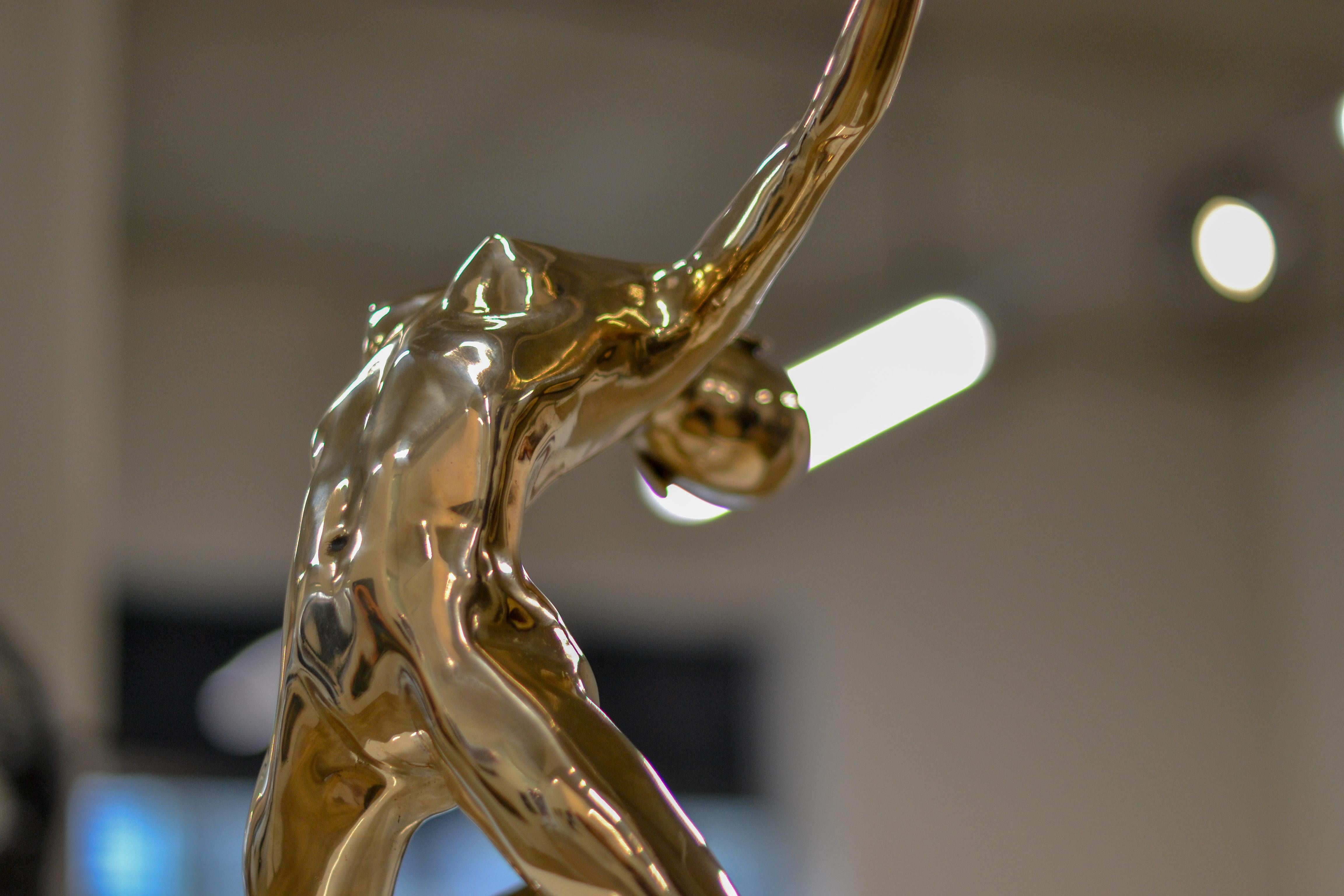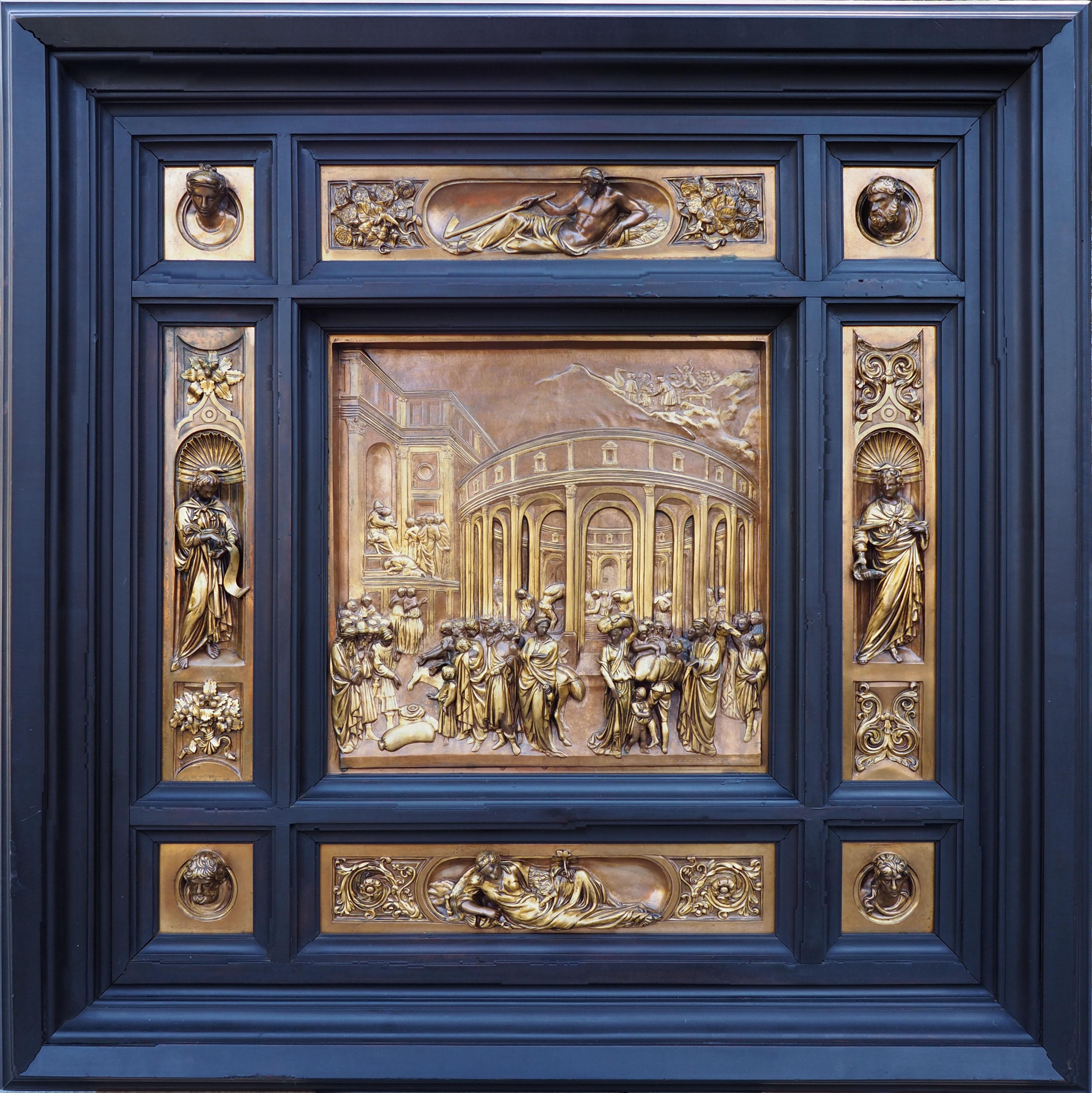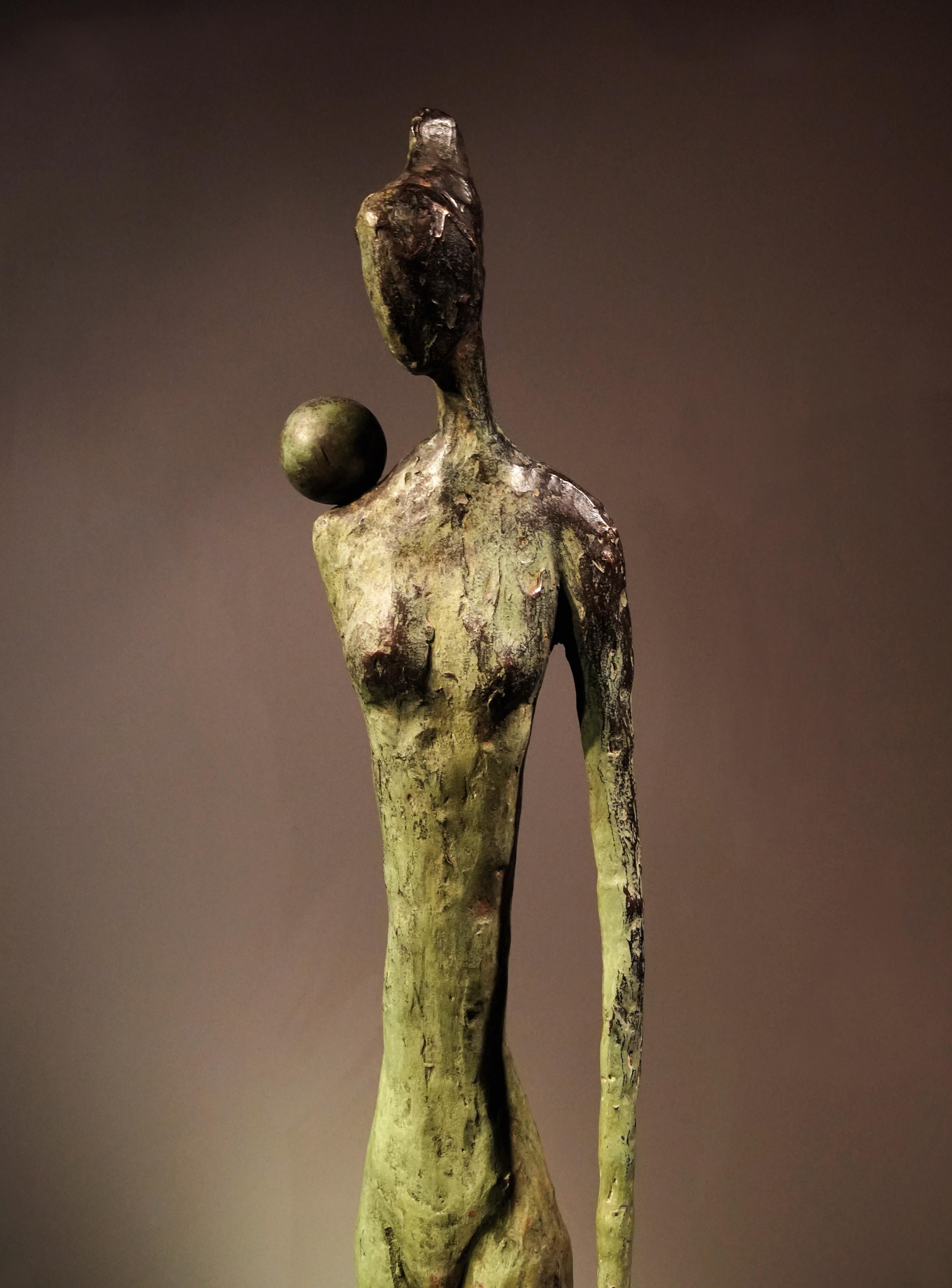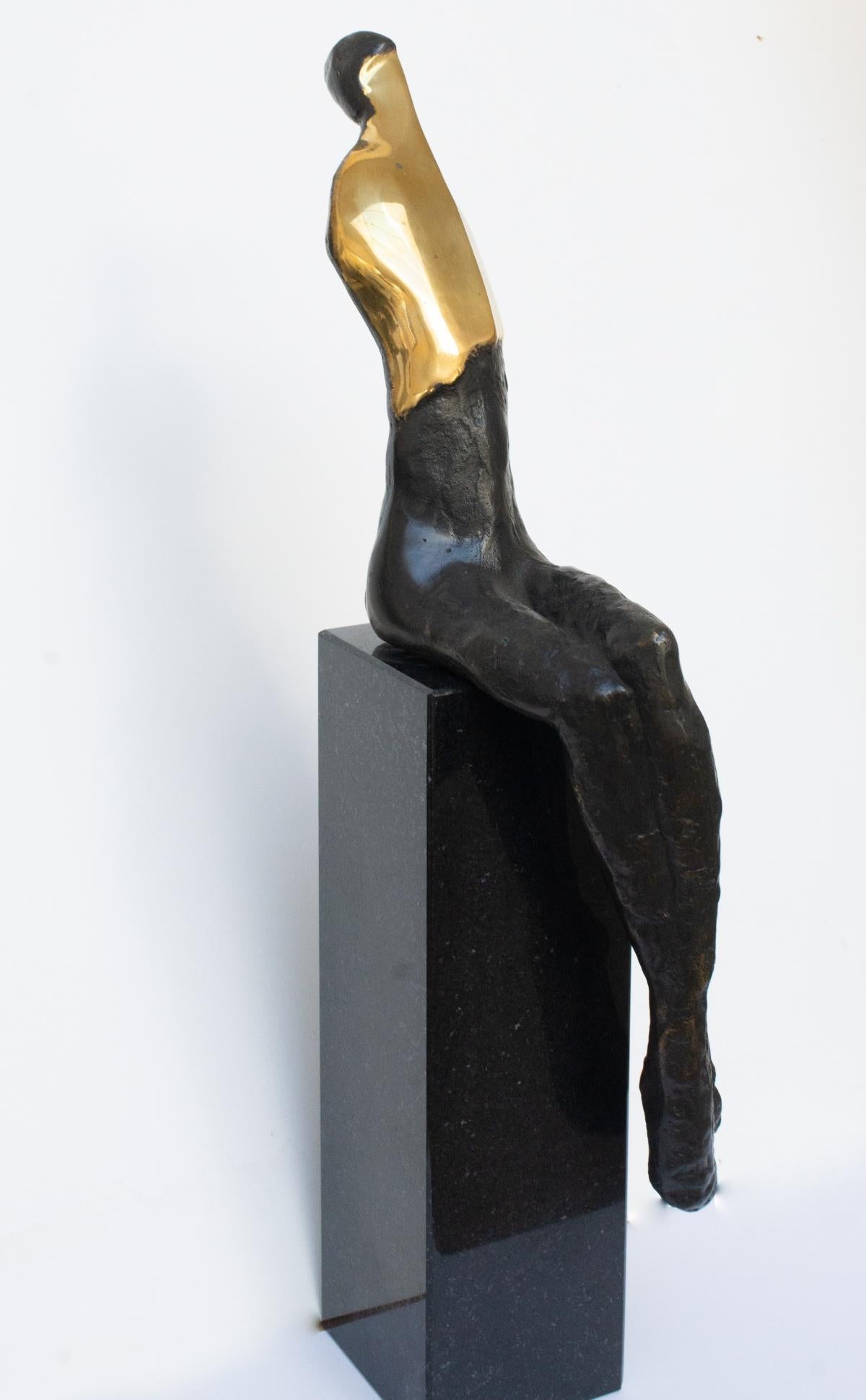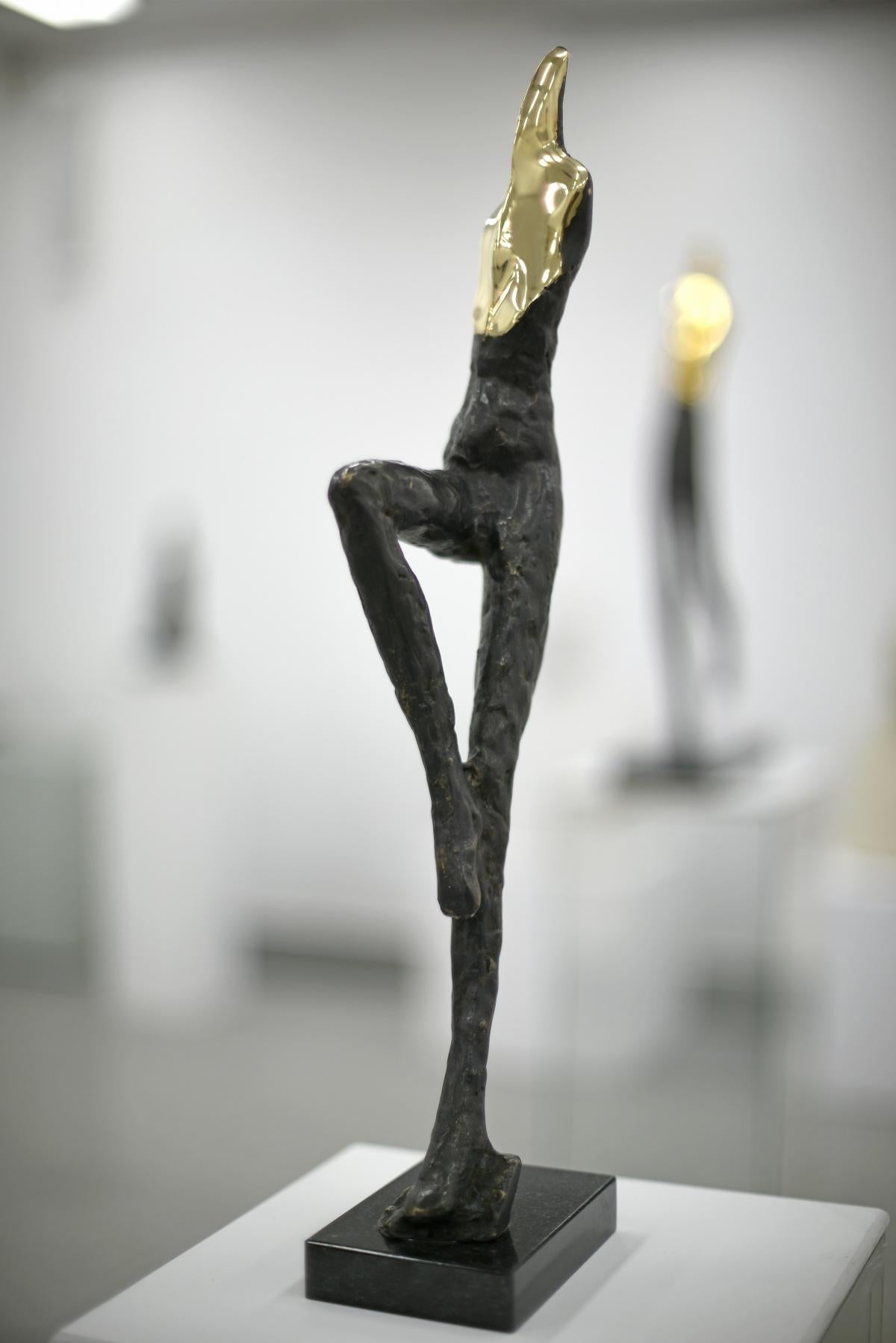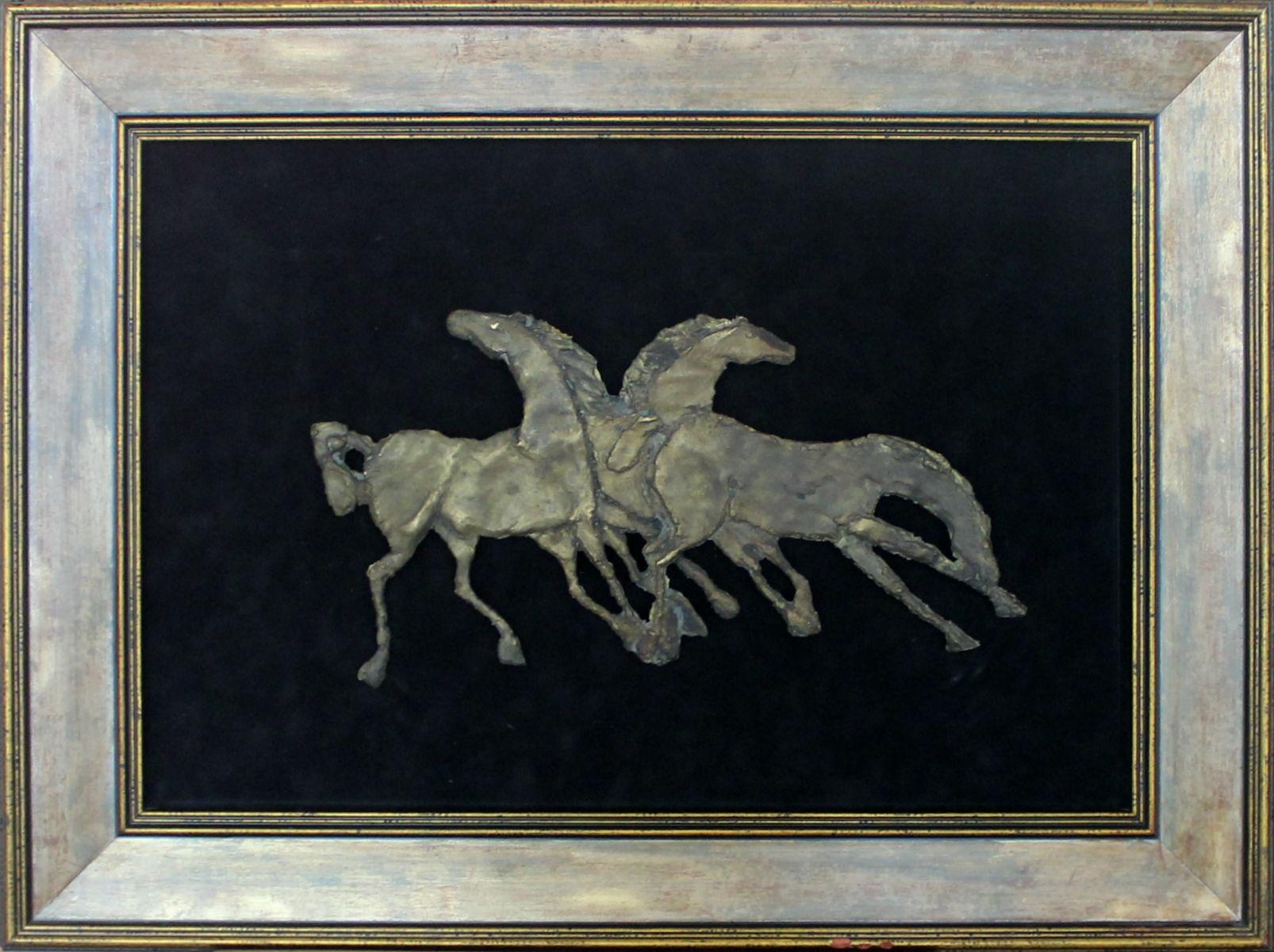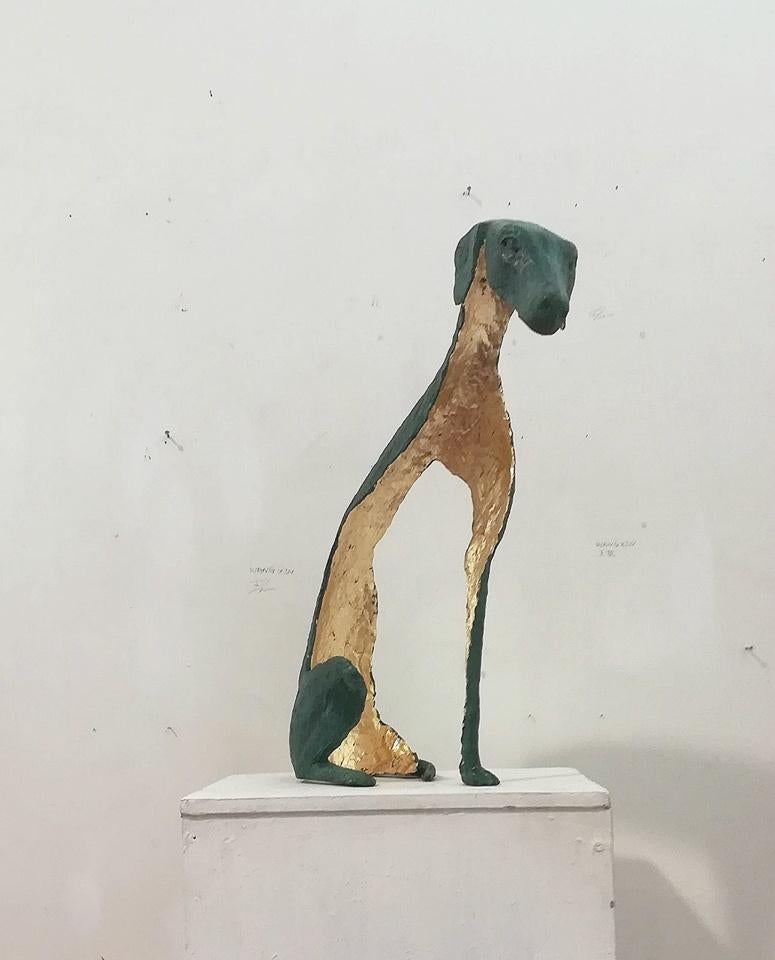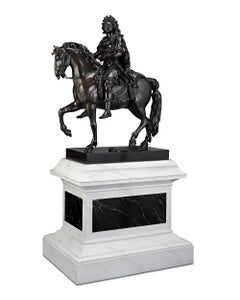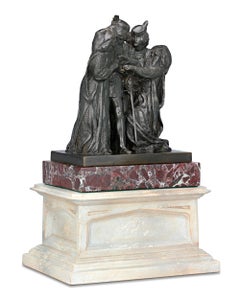
Bronze Bust of Napoléon as General
View Similar Items
Want more images or videos?
Request additional images or videos from the seller
1 of 6
UnknownBronze Bust of Napoléon as GeneralCirca 1885
Circa 1885
About the Item
- Creation Year:Circa 1885
- Dimensions:Height: 23.75 in (60.33 cm)Width: 14 in (35.56 cm)Depth: 8.75 in (22.23 cm)
- Medium:
- Period:
- Condition:
- Gallery Location:New Orleans, LA
- Reference Number:Seller: 30-57911stDibs: LU1861598523
About the Seller
5.0
Vetted Seller
These experienced sellers undergo a comprehensive evaluation by our team of in-house experts.
Established in 1912
1stDibs seller since 2013
13 sales on 1stDibs
Typical response time: 3 hours
More From This SellerView All
- THE LAST DAYS OF NAPOLÉON BYLocated in New Orleans, LAThis highly evocative bronze by Vincenzo Vela captures the deposed Emperor Napoléon on his deathbed, holding a map of Europe and lost in thought about what might have been. Remarkable among most portrayals of the exiled leader, this highly detailed sculpture depicts Napoléon at his most vulnerable. Nonetheless, Vela perfectly captures his still-heroic bearing, which imparts to this work a monumental quality and quiet dignity. The mate to this figure is the colossal marble at the Musée du Château de Malmaison, which was shown at the Paris Salon of 1867. The founder of the verismo movement in Italy, Vela was one of the great exponents of realism in sculpture. Born in Ligornetto, Switzerland in 1820, he studied under celebrated sculptor, Benedetto Cacciatori. He was also influenced both by the work of Tuscan sculptor Lorenzo Bartolini, who seamlessly combined neoclassicism with naturalism and the romantic painting of Francesco Hayez...Category
19th Century Realist Figurative Sculptures
MaterialsMarble, Bronze
- Girardon’s Equestrian Portrait of Louis XIVLocated in New Orleans, LAKing Louis XIV, one of France's greatest monarchs, sits confidently astride a prancing steed in this bronze equestrian statue. The extraordinary work is a reduction of the portrait of the Sun King by François Girardon, one of the most noted and influential sculptors of the period. Looking back to the great masterpieces of antiquity, Girardon took his inspiration from the seminal ancient Roman marble of Marcus Aurelius, now in the Musei Capitoline (Rome). Louis XIV is thus portrayed here as a conquering Roman hero, his costume adorned with many neoclassical motifs, hand outstretched in a gesture of command. The result is an imposing royal portrait of power and absolute authority that pays homage to one of the most important sovereigns in French history. It was in 1685, at the very height of his rule, when Louis XIV commissioned the monumental bronze of himself from the great Girardon. As sculptor to the king, Girardon was a key figure in the decoration of the gardens at the Château de Versailles, and he was later commissioned to complete several important royal...Category
19th Century Other Art Style Figurative Sculptures
MaterialsBronze
- How They Met Themselves By John Singer SargentBy John Singer SargentLocated in New Orleans, LAJohn Singer Sargent 1856-1925 American How They Met Themselves Bronze John Singer Sargent was among the most successful artists of his era. By the late 19th century, he was the m...Category
Early 20th Century Post-Impressionist Figurative Sculptures
MaterialsBronze
- Married Love by Oscar NemonLocated in New Orleans, LAOscar Nemon 1906 - 1985 Croatian Married Love Signed “Nemon” (on reverse) Bronze resin with green patina This rousing and sentimental sculpture, commis...Category
20th Century Figurative Sculptures
MaterialsBronze
- Bronze of Pluto Abducting Proserpine after François GirardonLocated in New Orleans, LAAfter François Girardon 1628-1715 French Pluto Abducting Proserpine Bronze This High Baroque period composition captures the famed narrative of Pluto and Proserpine from Roman mythology. The late 17th-century patinated bronze, created after François Girardon's marble composition, captures the very moment that Pluto seizes Proserpine. The anguished goddess reaches skyward, attempting to escape the god’s grasp while Pluto’s stoic face betrays his knowledge that his ploy will succeed. This pivotal moment in the mythological tale has captured the imagination of many art historical greats, from Bernini to Rubens. François Girardon’s version of the climax demonstrates incredible finesse and artistry, modeled expertly in bronze in the present work by a later sculptor. The statue brings a twist of intertwined bodies into a dynamic frenzy, paralleling the tension of the legendary story. In ancient Roman mythology, Proserpine, the beautiful daughter of Ceres — known as Persephone in Greek mythology — was picking flowers in the fields when she was suddenly abducted by Pluto, the god of the underworld, and taken to his kingdom. Consumed with grief, her mother Ceres, the goddess of agriculture, scorches the earth, stopping the growth of grain and fruit. Jupiter attempts to intervene and secure Proserpine’s return to earth, negotiating a compromise with Pluto and the Fates that allows Proserpine to be released for part of the year before returning to Pluto’s underworld. Proserpine’s journey back and forth is an allegory for the changing seasons; when Prosperine is with her mother, the earth warms and provides bountiful harvests. Upon her annual return to the underworld, however, the earth once again becomes cold and barren. After returning to France after years of training in Rome, François Girardon quickly rose to become one of the greatest artists in France. He was elected a member of the Académie Royale de Peinture et de Sculpture in 1657 and would become Chancellor of the Royal Academy in 1695. The artist was approached frequently for royal commissions and Girardon’s Pluto was originally commissioned by Louis XIV for the gardens at his Palace of Versailles. It was one of four monumental marble groups intended to decorate the corners of Charles Le Brun’s never completed garden at the chateau, the Parterre d’Eau. Each group of three figures symbolized one of the four elements: earth, air, fire and water. Pluto’s association with hell made him the apt...Category
Early 18th Century Baroque Figurative Sculptures
MaterialsBronze
- Laocoön And His Sons BronzeLocated in New Orleans, LALaocoön and his Sons Italian Bronze Group after Agesander, Polydorus and Anthenodorus Late 18th Century “The greatest piece of art in the world.” - Michelangelo, Italian sculptor, p...Category
Late 18th Century Baroque Figurative Sculptures
MaterialsBronze
You May Also Like
- Out of the Sky- 21st century Bronze sculpture of Cheetah's running, jumping downBy Antoinette BrietLocated in Nuenen, Noord BrabantThis Sculpture is made by Dutch artist Antoinette Briet. Her forms always are an abstraction of movement in the world of animals. In this particular sculpture she shows here admirati...Category
2010s Contemporary Figurative Sculptures
MaterialsBronze
- Open Arms - 21st Century Contemporary, Nude Woman Sculpture, BronzeBy Andries VeltingLocated in Nuenen, Noord BrabantAndries Velting is a new artist at Gallerie Bonnard. His moving sculptures of dancers are a special addition tot our existing collection. Velting says: "Ever since childhood I've be...Category
2010s Contemporary Nude Sculptures
MaterialsBronze
- Facile- 21st Century, Contemporary Italian Bronze Sculpture of a womanBy Eva SteinerLocated in Nuenen, Noord BrabantFacile 59 x 30 x 30 cm bronze Facile is a bronze sculpture by Italian contemporary artist Eva Steiner. In her work she focuses on the gracefulness of women. Her sculptures of bronz...Category
2010s Contemporary Figurative Sculptures
MaterialsBronze
- The Descent - 21st Century, Contemporary, Figurative Sculpture, BronzeBy Gil BruvelLocated in Barcelona, CataloniaBronze sculpture Edition of 35Category
21st Century and Contemporary Contemporary Figurative Sculptures
MaterialsBronze
- Georgian Contemporary Sculpture by Erekle Tsuladze - Elvis PresleyLocated in Paris, IDFArtificial stone & nickel bronzeCategory
2010s Contemporary Figurative Sculptures
MaterialsStone, Bronze
- The Story of Joseph from the Second Baptistery Doors, Florence (“The Gates of PaBy Ferdinand BarbedienneLocated in New York, NYFerdinand Barbedienne (Saint-Martin-de-Fresnay 1810 – 1892 Paris) after Lorenzo Ghiberti (Florence, 1378 – 1455) Signed at the lower right of the principal relief: F. BARBEDIENNE Provenance: Private Collection, USA. Barbedienne’s “Gates of Paradise” reliefs are one of the triumphs of nineteenth-century bronze casting and patination. The nine panels that comprise our example are half-size reductions of the famous originals by Lorenzo Ghiberti, made for the Baptistery of Florence and now housed in the Museo del Opera del Duomo. Mounted in an impressive, mullioned frame surround, our work is an exceptional exemplar of the Renaissance Revival, the broadly influential style and movement that infused architecture, design, and artistic culture in the latter half of the nineteenth century. The central scene, The Story of Joseph, is perhaps the most celebrated of the entire series depicting as it does seven episodes from the Biblical narrative integrated into a single composition: Joseph cast by his brethren into the well, Joseph sold to the merchants, the merchants delivering Joseph to the pharaoh, Joseph interpreting the pharaoh’s dream, the pharaoh paying him honor, Jacob sending his sons to Egypt, and Joseph recognizes his brothers and returns home. The surrounding reliefs—two vertical figures in niches, two recumbent figures, and four portrait heads in roundels—are as well faithful reductions of Ghiberti’s original bronzes on other parts of the doors. The maker of these casts was the renowned 19th-century French fondeur Ferdinand Barbedienne. Gary Radke has recently written of this great enterprise: “The Parisian bronze caster Ferdinand Barbedienne began making half-sized copies of ancient and Renaissance sculpture in the 1830s. His firm benefitted enormously from the collaboration of Achille Collas, whom Meredith Shedd has shown was one of numerous pioneers in the mechanical reproduction of sculpture. Their competitors largely devoted themselves to reproducing relief sculpture, but Collas devised a process for creating fully three-dimensional copies. A tracing needle, powered by a treadle, moved over the surface of a full-sized plaster cast or bronze of the original and triggered a complementary action in a cutting stylus set over a soft plaster blank…He signed an exclusive contract with Barbedienne on November 29, 1838, and won medals for his inventions in 1839 and 1844. Barbedienne’s half-sized copies of the Gates of Paradise were famous not only for their fidelity to the original, but also for the way their gilding…suggested the glimmering surface that was hidden under centuries of dirt. Some critics even saw Collas’s and Barbedienne’s work as ‘philanthropic, an exemplary adaptation of industry to the requirements of art, the artist, the workers, and the public alike.’ At 25,000 francs, Collas’s and Barbedienne’s reduction of the Gates of Paradise was singularly more expensive than any other item for sale in their shop. All the reliefs, individual statuettes, and busts were cast separately and could be purchased either by the piece or as an ensemble. Fittingly, Barbedienne’s accomplishment earned him the Grand Prix at the 1878 Paris Exposition Universelle, along with numerous other medals.” Three complete examples of the Barbedienne-Ghiberti doors are known. One, first installed in a chapel in the Villa Demidoff of San Donato near Pratolino, was later acquired by William Vanderbilt...Category
Late 19th Century Figurative Sculptures
MaterialsBronze
